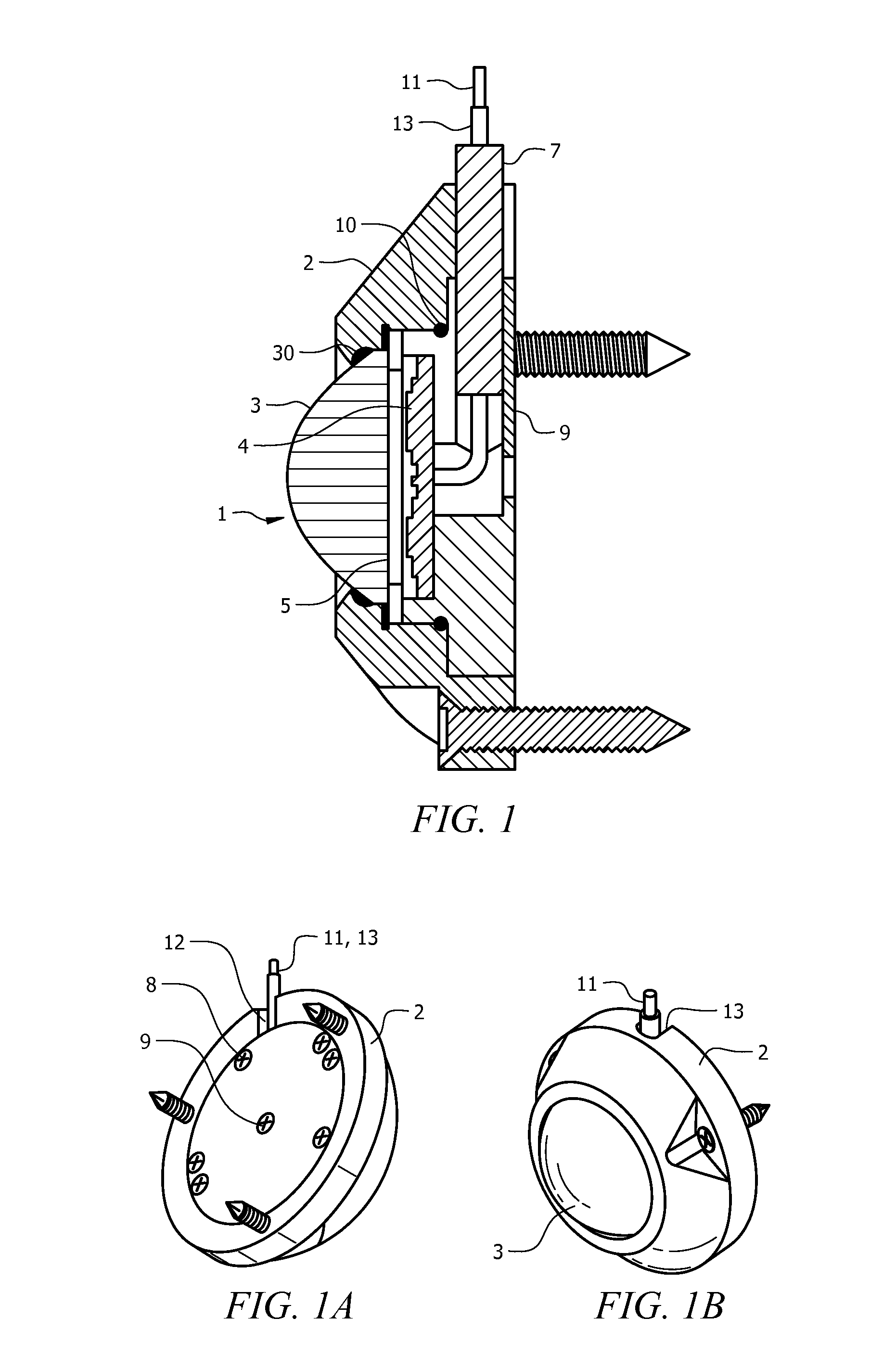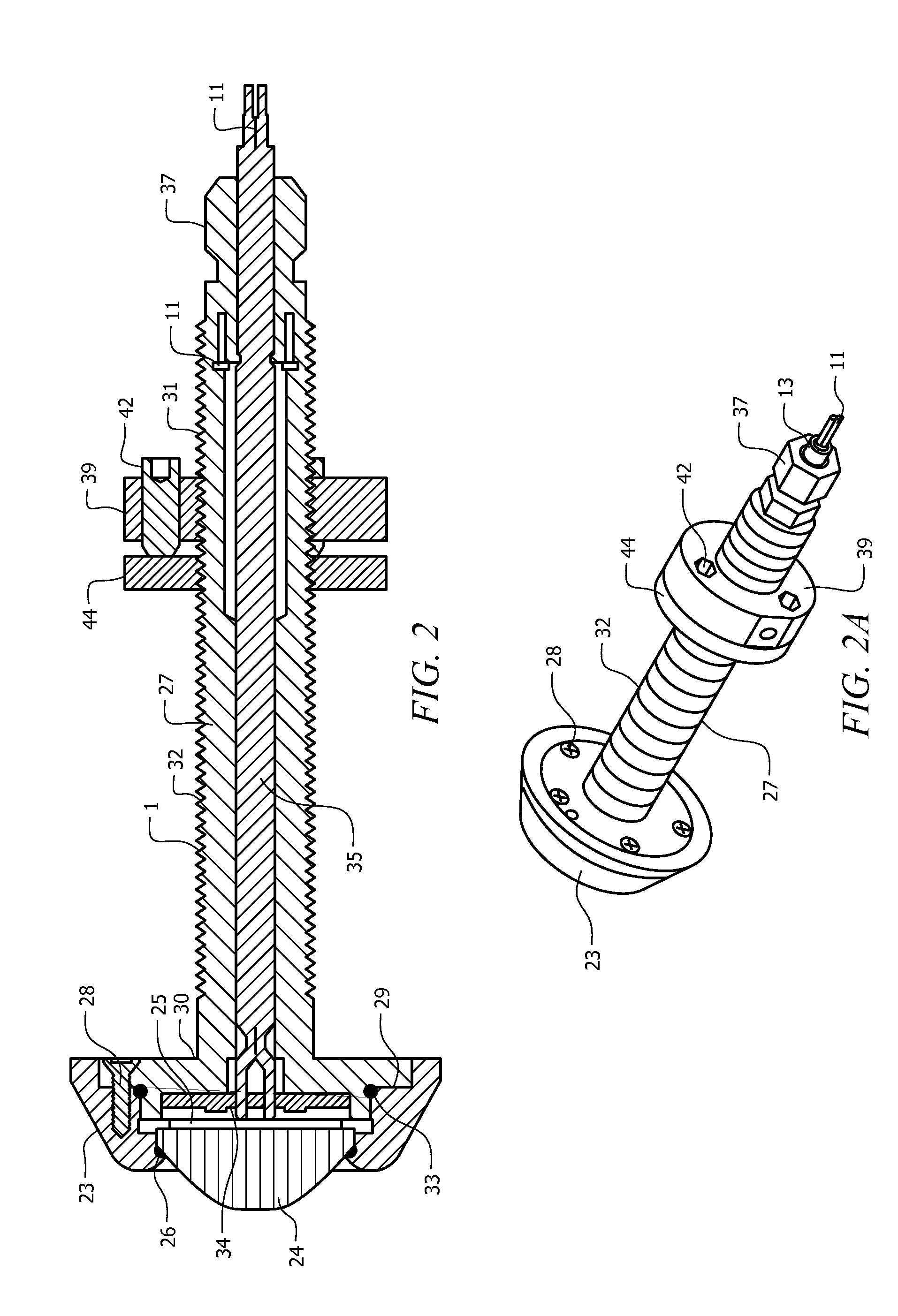LED light with a diffracting lens
a technology of diffracting lens and led light, which is applied in underwater equipment, lighting and heating equipment, animal husbandry, etc., can solve the problems of not being waterproof or watertight, easy to be obstructed, and the lights mounted on the exterior of the boat often need replacement and repair
- Summary
- Abstract
- Description
- Claims
- Application Information
AI Technical Summary
Benefits of technology
Problems solved by technology
Method used
Image
Examples
Embodiment Construction
[0040]For a better understanding of the present invention, reference may be had to the following detailed description taken in conjunction with the appended claims and the accompanying drawings.
[0041]The present invention is an underwater light assembly that can either be surface-mounted to a surface of the vessel or can form a thru-hull view port assembly that is constructed to have a watertight fit in the hull or deck of a vessel. Unlike conventional lights, the present invention utilizes optical lenses to simultaneously disperse and focus the light. FIG. 1 depicts a first preferred embodiment of the present invention wherein the underwater light assembly 1 is configured to be surface-mounted to the surface of a vessel. Main body 2, having an inner and outer face, is used to mount the assembly 1 to an exterior surface of the vessel. A substantially transparent lens 3 is removably mounted on the inner surface of the main body 2.
[0042]Preferably, lens 3 is of a suitable shape for di...
PUM
 Login to View More
Login to View More Abstract
Description
Claims
Application Information
 Login to View More
Login to View More - R&D
- Intellectual Property
- Life Sciences
- Materials
- Tech Scout
- Unparalleled Data Quality
- Higher Quality Content
- 60% Fewer Hallucinations
Browse by: Latest US Patents, China's latest patents, Technical Efficacy Thesaurus, Application Domain, Technology Topic, Popular Technical Reports.
© 2025 PatSnap. All rights reserved.Legal|Privacy policy|Modern Slavery Act Transparency Statement|Sitemap|About US| Contact US: help@patsnap.com



